
Figure 7 - Under cabinet LED task lighting
Use under cabinet task lighting that does not emit a lot of heat, such as LED types, as shown in Figure 7.
Additional information on:
Choosing light bulbs and lamps.
Make sure that all light switches, including the task lighting switches are located in an accessible location.
Electrical:
Access to the kitchen is as important as any other design consideration. Door opening should be at least 32 inches of a completely unobstructed opening. The use of swing-free or expandable door hinges (Figure 2) can help to obtain the minimum 32 inch dimension if you must have a door on the kitchen entry point.
- Outlets (Receptacles):
- Wall outlets for countertop use - the normal location for a wall outlet; the wall above and behind the base cabinets in not an easily accessible location for someone in a wheelchair. Consider placing outlets on the face of the base cabinets or use flip-up countertop outlets, as shown in Figure 8.

Figure 8 - Flip-up electrical receptacle in closed and open positions
- Wall outlets on cabinet vacant walls - wall outlets located away from cabinets should be at least 18 inches above the finished floor so that they are conveniently accessible for someone in a wheelchair.
Note: Check with your local building department with respect to countertop mounted flip-up outlets. Many building departments will not approve their use even if they are UL and CSA approved.
- Switches:
- Switches - install switches at a height of 48 inches from the top of the finished floor.
- Switch Style - Decorator style, rocker switches are easier to operate than toggle switches.
- Remote Control - Consider the use of remote control switches, as shown in Figure 9.
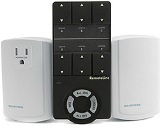
Figure 9 - Remote control switch
Appliances:
- Cooking:
- Cooktops - a standard range with a cooktop and oven should be replaced with a separate cooktop and oven. The cooktop should be mounted in a base cabinet that provides underneath access for a wheelchair (knee space). Cooktop burner or element control knobs should be located in a position that does not require the user to reach across hot burners in order to adjust cooking temperatures, as shown in Figure 10.
- Ovens - the oven should be a built-in model, Figure 11, mounted in a base cabinet.
- Provide a heat-resistant pad of some sort close to the oven so that cookware that is removed from the oven can be conveniently set down.
- Dishwasher:
- Consider the use of a built-in drawer style dishwasher, as shown in Figure 12, mounted in a base cabinet.
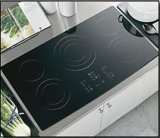
Figure 10 - Cooktop with front burner controls
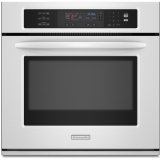
Figure 11 - Built-in oven
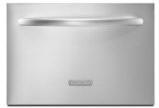
Figure 12 - Drawer style dishwasher
- Microwave:
- Microwave ovens should be mounted in a base cabinet.
- Refrigerator/Freezer:
- Side by side refrigerator/freezers, as shown in Figure 14, are easier to use than a standard two door, upper and lower refrigerator/freezer.
- Refrigerator/freezers that have the freezer as a drawer on the bottom, as shown in Figure 15, of the appliance are an acceptable alternative.
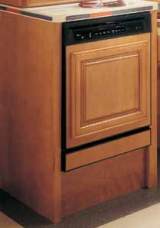
Figure 13 - Dishwasher raised 9 inches

Figure 14 - Side by side refrigerator/freezer
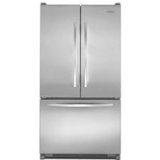
Figure 15 - Refrigerator with bottom drawer freezer
Turning Space:
A cramped kitchen can in itself a logistical nightmare. Wheelchairs require approximately 5 feet of turning space, 25 square feet in total. Placing objects such as island counters, chairs and stools within the kitchen area itself can make maneuvering difficult and hazardous.
